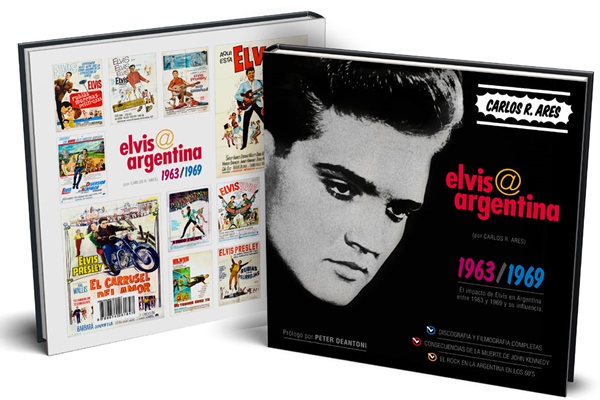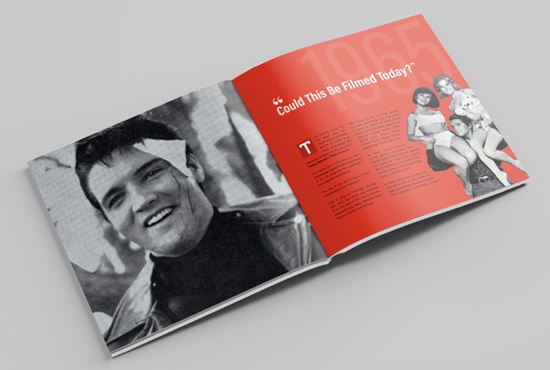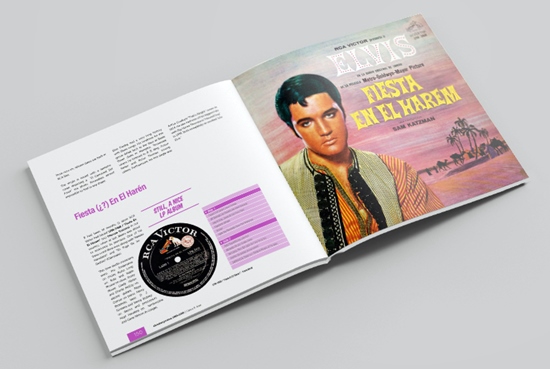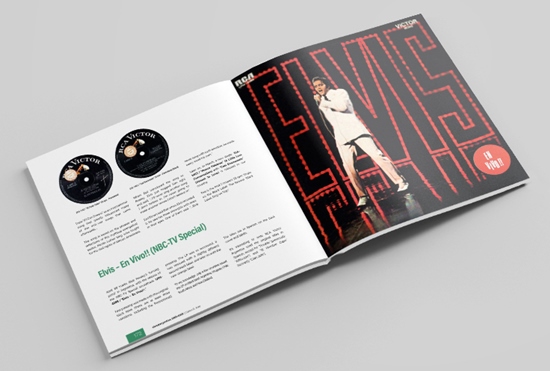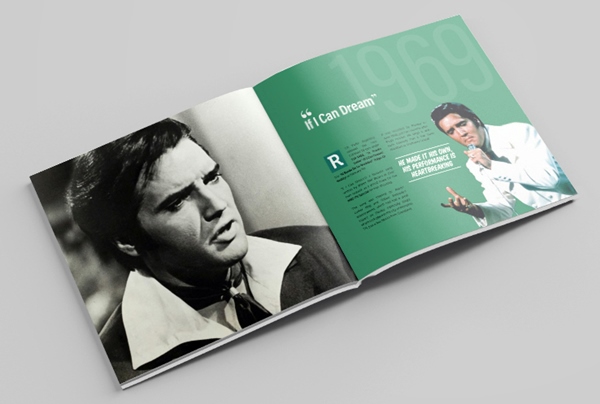 |
 |

Book Review: English language edition reviewed by Nigel Patterson, December 2020 Elvis@Argentina 1963-1969, Carlos R. Ares, Argentina, 2020, Hardcover (d/j), 197 pages, Illustrated, ISBN-13: 978-9879519615
‘I vividly recall the unequalled emotion of opening a newspaper and seeing those magical words in black letters: “NOW SHOWING” (Carlos R. Ares) The Narrative and Visuals Well known South American Elvis identity, Carlos Ares, recently released the second volume in his series of coffee table books chronicling Elvis in Argentina. My first observation is that Claudia Giacobbe’s English translation is excellent. There is also a neat Foreword by noted Elvis world identity, Henrik Knudsen (Elvis Unlimited/Memphis Mansion, Denmark). Henrik rightfully notes that Carlos Ares is a name recognised (and respected) around the world. Carlos Ares’ text is a comprehensive account of its subject. Elvis’ records, films, sheet music and media coverage during the seven year period are all detailed, and it is another terrific release. The first volume was rated as one of the best Elvis book releases of 2018, and the same can be said of the second volume in 2020! Carlos sets the scene and tone for his book in his introductory section:
Film and record reviews are both positive and negative and reflect a changing critical (but not necessarily fan view) of Elvis’ career. They are often written with the interesting Spanish style of expression. For instance, La Razon newspaper was initially on Elvis’ side:
However, by the time Rubias Contra Pelirrogas (Frankie and Johnny) was released, La Razor had turned. Its review included:
Elvis@Argentina 1963-1969 is not just a descriptive narrative. Carlos Ares’ text is thoughtful and insightful. About Kissin’ Cousins he rightfully questions, ‘Could this be filmed today?’
The narrative includes interesting production and release background to Elvis’ film and record releases in Argentina, and while the book is primarily about Elvis’ reception in Argentina it also includes biographical information about Elvis and details of socio-political events relevant to the time. For instance, there is a very interesting discussion about the assassination of President John Fitzgerald Kennedy and its relationship to a changing popular music landscape. The hundreds of color and b&w visuals comprise record, film and memorabilia artefacts, and are a pleasure to view. The book has a wonderful variety and balance of imagery throughout its nearly 200 pages. Stand-out photos include full page color images of many Elvis film posters, record covers and record labels – I particularly liked:
The non-English titles of Elvis’ record and film releases add an interesting dimension for the reader as do the posters and covers with very different design images to their US-UK counterparts. For example, Tickling Elvis; Fiesta in California, and En Fuga de su Destino – they will be new to many readers and stimulate our interest. Who would have thought that En Fuga de su Destino was the title used for Clambake? The periodical use of color pages and color backgrounds also adds to the attractiveness of the book. Retouched photos of Elvis were common during Elvis’ career and those appearing in Elvis@Argentina 1963-1969 are intriguing given the different look they give Elvis, and they don’t disappoint. One, on page 106, is particularly striking. Similarly, the large range of impressive archival material attracts attention – the many press clippings are an important archival record of media focus on Elvis. The news is often fascinating, including rumours of Elvis touring Argentina, the impact of Ricardo Meija (a keen promoter of Elvis) leaving RCA, and information and images for the very rare Revidicos release featuring a cover version by Rolo Moreno of Elvis’ Viva Las Vegas. I did find it interesting though, that the author elected to provide a full page to its non-Elvis back cover – however, I must say I have always enjoyed Cinzano. On the issue of Elvis touring Argentina, the author comments:
The titles for various sections of the book are also well done and nicely presented (grabbing your attention and interest) – they include: Diversion en Acapulco; Amor en Las Vegas; El Carrusel del Amor; Tickling Elvis; and “Rock-A-Bye Baby”. Other references have a pleasant charm, such as: ‘A Devalued But Funny Harem”.
The Design The page design, as with the first volume, is strong with text and visuals nicely placed, avoiding any overcrowding (which could easily have been an issue given the voluminous number of images, clippings, etc in the book) and ensuring good use of white space to enhance reading and viewing pleasure. As noted earlier, the use of a number of color pages is a nice touch and visually interesting. The pages are high quality paper stock and tightly bound into the spine of the hardcover. A dust jacket completes the package. Elvis@Argentina 1963-1969 also includes a Table of Contents, About the Author, a Complete Discography (including details of Unissued RCA Master Tapes) and Complete Filmography for 1963 to 1969, as well as a Brief Showbiz Chronicle (co-authored by G onzalo Corral San Martin and Carlos Rodriguez Ares) – this latter section chronicles major show business events of a largely non-Elvis nature. But with names like The Beatles, Paul Anka, Jose Feliciano, Sacha Distel, Connie Francis, Bye Bye Birdie, Vanessa Redgrave, and (the French Elvis) Johnny Hallyday, it is a welcome inclusion which adds context around the period. Argentine readers will also appreciate information about South American stars.
Verdict: Elvis@Argentina 1963-1969 is another fine release by Carlos Ares. With a great design that is bright and colorful, strong, thoughtful text, and visually pleasing images, it lives up to its intent of providing a record of Elvis in Argentina during the titular seven years - the highs, the lows, and importantly, the artistry of the King of Rock and Roll. This release is an important archival record of its subject. The next volume in the series won’t be published until at least 2022 – I for one, cannot wait. Book Review by Nigel Patterson. Coming tomorrow EIN’s interview with Carlos Ares
|
|

